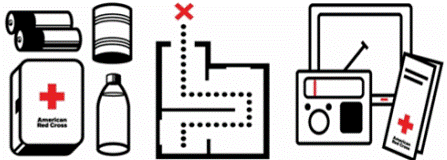
Families can do a lot to protect themselves in the event of a hazard or other threat. It often takes several days for local authorities or response agencies to begin to provide assistance at wide scale. Prepared ahead of time, there is much that families can do in that time period to reconnect with one another, identify safe shelter, and meet their own immediate needs.
Resources
- Red Cross and Red Crescent national societies provide a range of resources to help individuals and households create a family disaster plan. Here are examples from the American Red Cross:
- guidance developed together with local authorities
- a template to fill in
- guidance on protecting your pets
Look up your local Red Cross or Red Crescent national society to find resources specifically for your country.
- The IFRC’s key messages for Public Awareness and Public Education for disaster risk reduction provides a comprehensive set of all-hazard and hazard-specific actions that you can include in your family disaster plan.
- Ensuring all members of the family understand the family disaster plan is essential. The Introducing Emergencies activities from the British Red Cross are a helpful resource, both for familes and for teachers looking to cover this topic with students.
Examples
- The American Red Cross integrates family disaster plans as one of the elements of its Home Fire Campaign. As one set of volunteers installs a smoke detector in the family’s house, another set of volunteers work with the family on their own disaster plan.
- The Australian Red Cross’ Rediplan programme provides a range of guidance on simple and practical steps you can take to protect yourself and your family, a Get Prepared app, and interactive quizzes to assess your own preparedness levels.